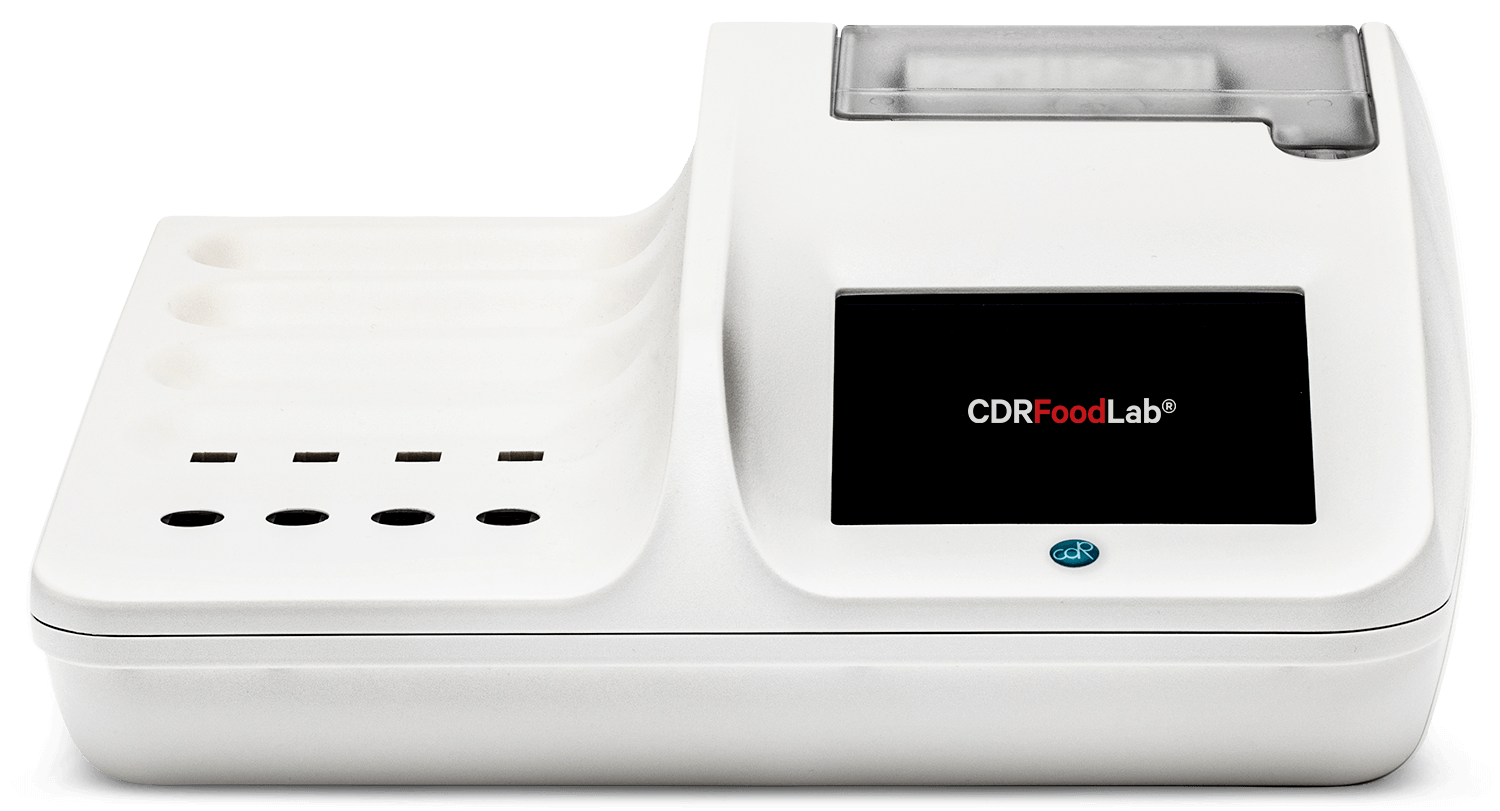CDR FoodLab®: multiple applications in just one instrument.
CDR FoodLab® is the chemical analysis system for quality and process control that allows you to determine a wide range of parameters of many foods, animal feeds and pet foods. Discover all possible applications.
All applications
From raw materials...
Thanks to its analysis procedures developed by CDR laboratories for the specific application, CDR FoodLab® can be used by anyone for testing in production facilities and at the point of acceptance of raw materials, as well as in the laboratory, where it helps save time and resources.
...to the finished product.
CDR laboratories have developed simple and rapid sample preparation systems that allow quality control to be carried out on the finished product in a short time.
CDR FoodLab® is:
Reliable
The instrument ensures results in accordance with reference methods. The use of LED reading cells guarantees high sensitivity, a wide measuring range and excellent repeatability of the results.
Simple
The analytical methods are simpler than traditional ones. The system can be used not only in the laboratory, but also on the production line in real time, by non-expert operators. In addition, the instrument has a Help function for step-by-step user guide.
Fast
The methods developed in CDR laboratories speed up the analysis procedures: sample preparation is absent or very simple and analyses are carried out in just a few steps. It is possible to analyse several samples simultaneously or manage the determination of several analytical parameters at the same time of the same sample.
Which model is the most suitable for your needs?
CDR FoodLab®
- Complete analysis panel, supplied already configured
- Up to 16 determinations simultaneously
- Possibility of carrying out analyses of the same sample
- Integrated printer
- Full connections (LAN - USB - Bluetooth barcode/QR code reader)
CDR FoodLab® Jr
- Partial analysis panel, customisable configuration
- Up to 3 determinations simultaneously
- Wireless connection to external printer
- USB connections
Value your time
Discover all the advantages of our analysis system:
Frequently Asked Questions about CDR FoodLab®
A: The system’s reliability is confirmed by studies from universities and specialized institutes. Our clients worldwide attest to its effectiveness: Some methods are used by prestigious multinational groups
A: Each CDR test method is correlated with the corresponding international reference method, and in some cases is also adopted by accredited laboratories.
A: At startup, the instrument automatically checks the reading cell and blocks the analysis if an error is detected. In addition, CDR provides Control Solutions, samples with predefined results that allow users to regularly verify both instrument performance and operator accuracy. Integration with SAP further supports monitoring of the system’s status.
A: Because CDR FoodLab® analyzers are factory pre-calibrated together with their reagents, with calibration data embedded in the instrument and each reagent lot aligned to previous lots; an automatic self-check at every startup verifies performance, so routine user calibration is unnecessary, with fine-tuning available if necessary when aligning to alternative methods or legacy datasets. For a deeper explanation of how calibration is designed and managed, you click and read the full article
A: No, CDR FoodLab® requires neither maintenance nor periodic cleaning.
This is possible thanks to its optical technology based on an LED reading cell, which does not need calibration or periodic replacement, unlike traditional tungsten lamps or other more delicate systems. No drift over time, no corrective action required.
Its compact and robust design also makes the instrument ideal for direct use on production lines, even in demanding operational environments such as olive mills, wineries, breweries, or plants with industrial fryers.
Many of our customers have been using CDR FoodLab® for years, performing hundreds of analyses per week, without ever having to stop operations for maintenance activities.A: No Qualified technicians is needed: the system is intuitive and accessible to anyone.
A: Yes. CDR FoodLab® uses reagents in minimal quantities, significantly reducing operator risks compared to traditional methods. Additionally, it ensures sustainability through micro-analysis, which minimizes reagent use, waste, and emissions while maintaining safety and efficiency in food and beverage quality control. [More info ...]
A: Overall costs are highly competitive thanks to shorter analysis times, absence of maintenance, and long system lifespan based on LED technology.
Versatility will be your major asset
CDR FoodLab® gives you the possibility to analyse different products, both in the laboratory and on the production line, saving time and simplifying procedures. Discover how simple and fast it is to carry out your analyses with CDR FoodLab®.
Customers using CDR FoodLab®
The real proof of the value of our analysis systems is in the satisfaction of customers who choose us.
 United PetfoodAs a pet food producer, it is crucial to work with qualitative raw materials to produce the best kibbles on the market. FFA and PV are valuable parameters for evaluation of the quality of protein meals and fats/oils. The classic methods are often time-consuming, expensive and require trained lab personnel. The CDR Foodlab analyzer offers a faster and cheaper solution to analyze these parameters on-site upon reception of the raw materials. This instrument can be used after a basic training and provides a good indication of FFA and PV.
United PetfoodAs a pet food producer, it is crucial to work with qualitative raw materials to produce the best kibbles on the market. FFA and PV are valuable parameters for evaluation of the quality of protein meals and fats/oils. The classic methods are often time-consuming, expensive and require trained lab personnel. The CDR Foodlab analyzer offers a faster and cheaper solution to analyze these parameters on-site upon reception of the raw materials. This instrument can be used after a basic training and provides a good indication of FFA and PV.
